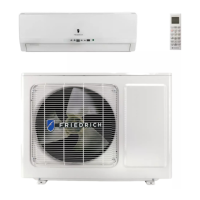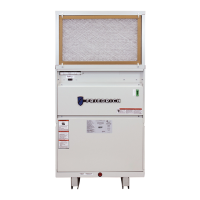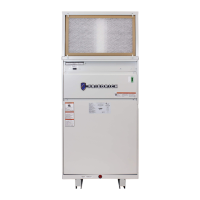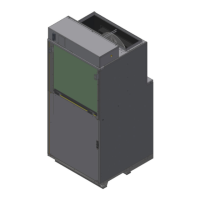112 PB
R-410A REFRIGERANT SYSTEM REPAIR
General Information
Under charged System
• An undercharged system will result in poor performance (low pressures, etc.) in both the heating and cooling cycle.
• Whenever you service a unit with an undercharge of refrigerant, always suspect a leak. The leak must be repaired before charging the unit.
• To check for an undercharged system, turn the unit on, allow the compressor to run long enough to establish working pressures in the system (15
to 20 minutes).
• During the cooling cycle you can listen carefully at the exit of the metering device into the evaporator; an intermittent hissing and gurgling sound
indicates a low refrigerant charge. Intermittent frosting and thawing of the evaporator is another indication of a low charge, however, frosting and
thawing can also be caused by insufficient air over the evaporator.
• Checks for an undercharged system can be made at the compressor. If the compressor seems quieter than normal, it is an indication of a low
refrigerant charge.
• A check of the amperage drawn by the compressor motor should show a lower reading. (Check the Unit Specification.) After the unit has run 10
to 15 minutes, check the gauge pressures. Gauges connected to system with an undercharge will have low head pressures and substantially low
suction pressures.
Overcharged System
• Compressor amps will be near normal or higher. Non‑condensables can also cause these symptoms. To confirm, remove some of the charge, if
conditions improve, system may be overcharged. If conditions don’t improve, Non‑condensables are indicated.
• Whenever an overcharged system is indicated, always make sure that the problem is not caused by air flow problems. Improper air flow over the
condenser coil may indicate some of the same symptoms as an over charged system.
• An overcharge can cause the compressor to fail, since it would be “slugged” with liquid refrigerant.
• The charge for any system is critical. When the compressor is noisy, suspect an overcharge, when you are sure that the air quantity over the
condenser coil is correct. Icing of the evaporator will not be encountered because the refrigerant will boil later if at all. Gauges connected to
system will usually have higher head pressure (depending upon amount of over charge). Suction pressure should be slightly higher.
Restricted System
• Troubleshooting a restricted refrigerant system can be difficult. The following procedures are the more common problems and solutions to these
problems. There are two types of refrigerant restrictions: Partial restrictions and complete restrictions.
• A partial restriction allows some of the refrigerant to circulate through the system.
• With a complete restriction there is no circulation of refrigerant in the system.
• Restricted refrigerant systems display the same symptoms as a “low‑charge condition.”
• When the unit is shut off, the gauges may equalize very slowly.
• A quick check for either condition begins at the evaporator. With a partial restriction, there may be gurgling sounds at the metering device
entrance to the evaporator. The evaporator in a partial restriction could be partially frosted or have an ice ball close to the entrance of the
metering device. Frost may continue on the suction line back to the compressor.
• Often a partial restriction of any type can be found by feel, as there is a temperature difference from one side of the restriction to the other.
• With a complete restriction, there will be no sound at the metering device entrance. An amperage check of the compressor with a partial
restriction may show normal current when compared to the unit specification. With a complete restriction the current drawn may be considerably
less than normal, as the compressor is running in a deep vacuum (no load.) Much of the area of the condenser will be relatively cool since most or
all of the liquid refrigerant will be stored there.
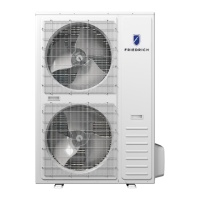
